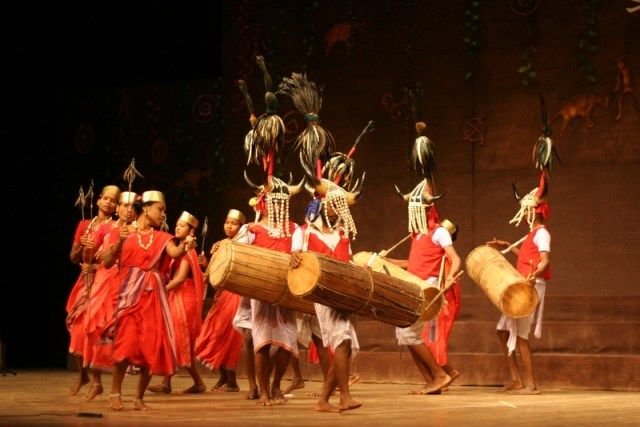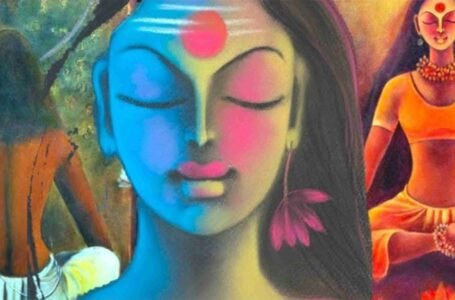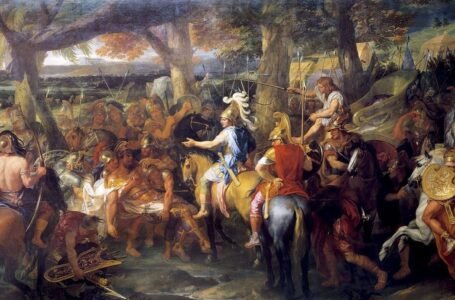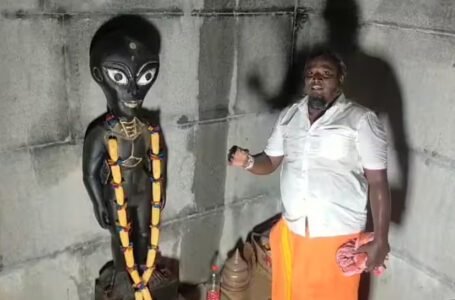Gaur Maria Dance: The Hunting Legacy of the Bison-Horn Maria Tribe

Folk dances are an integral part of India’s tribal communities, reflecting their cultural ethos, social traditions, and way of life. One such dance is the Gaur Maria Dance, performed by the Bison-Horn Maria tribe of Bastar, Chhattisgarh. This dance, inspired by the spirit of hunting, is energetic, theatrical, and deeply symbolic. It is performed on weddings, birth ceremonies, and tribal festivals, with a rhythmic display of drums, dynamic movements, and elaborate costumes.
However, with modernization and the decline of hunting traditions, the dance is gradually fading. This article explores the origins, cultural significance, performance style, costumes, music, and the efforts needed to preserve this ancient art form.
Origins and Cultural Significance
The Gaur Maria Dance belongs to the Bison-Horn Maria tribe, a subgroup of the Gond community, which has lived in the Bastar plateau of Chhattisgarh for centuries.
The term “Gaur” means bison, a revered animal among the tribe.
The dance reenacts a bison hunt, symbolizing courage, strength, and the warrior spirit.
It is performed during marriages, festivals, and important community gatherings.
This dance is more than just entertainment; it is a ritual of celebration, social bonding, and storytelling, passing down the tribe’s hunting traditions from one generation to another.
Performance and Dance Movements
The Gaur Maria Dance is performed in a procession-like manner, where men and women play different roles. The movements are fast-paced, powerful, and depict a bison hunt.
- The Hunting Sequence
Men act as hunters and warriors, mimicking the agility of a bison.
They wear horned headgear and move aggressively, tossing their heads to the beat of drums.
Women enter later, carrying long spear-like sticks, symbolizing their role in the tribal hunt.
- The Procession Format
The dance starts slowly and builds up intensity.
The men move in circles, leaping and stomping, imitating a bison’s movements.
Women dance around the men, thumping the ground with their sticks, creating a rhythmic hunting atmosphere.
- Symbolic Gestures
Waving headgear represents bison movements.
Drumbeats act as the tribal call for the hunt.
Women’s rhythmic spear-thumping symbolizes tribal unity and strength.
Costumes and Ornaments
The costumes of the Gaur Maria Dance are vibrant, elaborate, and crafted using natural elements.
Men’s Attire
Horned headgear – Representing the bison’s wild spirit.
Peacock feathers and cowries (shell beads) – Adding a decorative and majestic touch.
Brightly colored dhotis – Allowing ease of movement.
Ornamental belts and armlets – Symbolizing warrior strength.
Women’s Attire
Brass fillets and bead necklaces – Representing tribal heritage.
Tattooed bodies – A traditional tribal practice of identity.
Vibrant sarees with heavy jewelry – Enhancing the visual appeal of the dance.
Music and Instruments
The Gaur Maria Dance is accompanied by loud and rhythmic tribal music, which sets the pace and energy of the dance.
Primary Instruments Used:
- Mandar – A traditional drum producing deep beats.
- Dhol – Another large drum that maintains the dance’s tempo.
- Taal – Cymbals that add sharp metallic sounds.
The musicians play the drums energetically, gradually increasing the tempo, mirroring the rising intensity of the dance movements.
Social and Cultural Impact
The Gaur Maria Dance plays a vital role in strengthening community ties. It:
Brings the community together through performance and festivity.
Preserves oral history, as the dance narrates hunting traditions and tribal legends.
Provides a platform for storytelling, passing tribal knowledge to younger generations.
However, due to urbanization, loss of traditional livelihoods, and cultural shifts, fewer young people are learning the dance, putting it at risk of disappearance.
The Decline and Efforts for Preservation
In recent years, the Gaur Maria Dance has seen a decline due to:
Changing lifestyles – The transition from hunting to agriculture and modern jobs has reduced the dance’s cultural relevance.
Urban migration – Younger generations are moving to cities for education and work, distancing themselves from tribal traditions.
Modern entertainment – The influence of films, television, and digital media has overshadowed folk performances.
Efforts to Preserve the Dance
Cultural Festivals: Events like Bastar Dussehra showcase the dance to a wider audience.
Government Initiatives: The Chhattisgarh tourism board has promoted tribal dances in cultural exhibitions.
Documentation: Researchers, filmmakers, and anthropologists are working to record and archive performances.
Integration in Schools: Tribal schools are introducing traditional dance training to preserve indigenous heritage.
To sustain the Gaur Maria Dance, more efforts are needed to promote awareness, provide financial support to performers, and create platforms for its continued practice.
Conclusion
The Gaur Maria Dance is not just a performance; it is a living expression of the Maria tribe’s history, courage, and identity. Its vibrant costumes, energetic movements, and powerful rhythms make it a cultural treasure. However, without active preservation efforts, this rich tradition may fade into obscurity.
By documenting, promoting, and educating people about this dance, we can ensure that the Gaur Maria Dance continues to thrive, allowing future generations to witness the legacy of Chhattisgarh’s tribal heritage.


